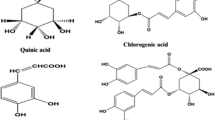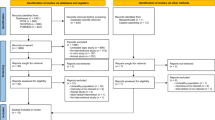Abstract
Justicia secunda is a therapeutic plant with acclaimed beneficial health effects including blood-boosting potential. However, scientific evidence from in vivo analyses to buttress such claims have not been exhaustively provided. Herein, we investigated the effect of J. secunda leaf extract on organs, hematology, lipid profile and endogenous antioxidant activity in male rats grouped into seven groups of five animals each. Tween-dissolved extract, in various concentrations (10 mg/kg body weight (bwt), 100 mg/kg bwt, 1000 mg/kg bwt, 1600 mg/kg bwt, 2900 mg/kg bwt and 5000 mg/kg bwt), was orally administered to group II–VII, respectively, whereas group one (fed 20% tween solution only) served as the control. After 28 days, the rats were sacrificed while blood was taken for hematological and biochemical assays. The liver, kidney and spleen were also isolated for histopathological analyses. In the sub-chronic toxicity analysis, the LD50 was above 5000 mg/kg bwt. Packed cell volume, red blood cell and hemoglobin increased significantly (p < 0.05) in group II and IV compared with the other administered groups. No significant difference was observed in the activity of ALT, AST, ALP and creatinine (p < 0.05) across the groups administered 10, 100, 1000 mg/kg bwt extract relative to the control. The activity of superoxide dismutase and malondialdehyde was higher in the administered groups than the control. Cholesterol, triglyceride and high-density lipoprotein-cholesterol level was increased in a dose dependent manner in the treated rats. However, low density lipoprotein-cholesterol level was reduced.
Graphical abstract







Similar content being viewed by others
Abbreviations
- AST:
-
Aspartate transaminase
- ALT:
-
Alanine aminotransferase
- ALP:
-
Alkaline phosphatase
- LDL-C:
-
Low density lipoprotein cholesterol
- HDL-C:
-
High density lipoprotein cholesterol
- TG:
-
Triglyceride
- MDA:
-
Malondialdehyde
- SOD:
-
Superoxide dismutase
- CAT:
-
Catalase
- LD50 :
-
Lethal Dose 50
- PCV:
-
Packed cell volume
References
Agbaje EO, Adeneye AA, Daramola AO (2009) Biochemical and toxicological studies of aqueous extract of Syzigium aromaticum (L.) Merr. & Perry (Myrtaceae) in rodents. Afr J Trad Cam 6(3): 241–254
Agbasi PU, Unekwe PC, Nweke IN, Okechi OO, Onyiaroah IV (2010) Toxic effects of Nimesulide on kidney of young albino rats. Res J Health Sci 1:17–29
Aimofumeh EO, Anyasor GN, Esiaba I (2020) Justicia secunda Vahl leaf fraction protects against acetaminophen-induced liver damage in rats by alleviating oxidative stress and enhancing membrane-bound phosphatase activities. Asian Pac J Trop Biomed 10(11):479–489
Akindele AJ, Oladimeji-Salami JA, Oyetola RA, Osiagwu DD (2018) Sub-Chronic toxicity of the hydroethanolic leaf extract of Telfairia occidentalis Hook. f. (Cucurbitaceae) in male rats. Medicines 5(1):4
Anyasor GN, Moses N, Kale O (2020) Hepatoprotective and hematological effects of Justicia secunda Vahl leaves on carbon tetrachloride induced toxicity in rats. Biotechnic Histochem 95(5):349–359
Benvo L, Fridovich I (1998) Growth in iron-enriched medium partially compensates E. coli for the Mn and Fe SOD. J Biol Chem 47(2):10313–10316
Berglund L, Brunzell JD, Goldberg AC (2012) Evaluation and treatment of hypertriglyceridemia: an endocrine society clinical practice guideline. J Clin Endocrinol Metab 97(9):2969–2689
Carrington S, Cohall DH, Gossell-Williams M, Lindo JF (2012) The antimicrobial screening of a barbadian medicinal plant with indications for use in the treatment of diabetic wound infections. West Ind Med J 61:861–864
Dacie JV, Lewis S (1991) Practical hematology, 7th edn. Churchill livingstone, New York, pp 50–56
de Carvalho C, Caramujo MJ (2018) The various roles of fatty acids. Molecules (basel, Switzerland) 23(10):2583. https://doi.org/10.3390/molecules23102583
Ellis G, Goldberg D, Spooner FM (1978) Serum enzyme tests in diseases of the liver and biliary tree. Ame J Clin Pathol 70:248–258
Esenowo GJ, Sam SM, Bala DN, Ekpo BAJ, Edung EM (2010) Phytochemical screening and the hematological effect of Peristrophe bicalyculata (RETZ) diet preparation in albino rats. World J Sci Technol 2:277–281
Friedewald WT, Levy RI, Frederickson DS (1972) Estimation of the concentration of LDL cholesterol in plasma, without the use of preparative ultra-centrifuge. Clin Chem 18:499–502
Gülçin, I, Büyükokuroglu ME, Oktay M, Küfrevioglu, OI (2003) Antioxidant and analgesic activities of turpentine of Pinus nigra Arn. subsp. pallsiana (Lamb.) Holmboe. J Ethnopharmacol 86(1): 51–58
Hayes AW (1989) Guidelines for acute oral toxicity testings. In: Principles and methods of toxicity, 2nd ed.; Raven Press Ltd.: New York, NY, USA
Herrera MH, Rosas RA, Crescente OV (2002) Biological activity of “Sanguinaria” (Justicia secunda) extracts. Pharm Biol 40(3):206–212
Hodge A, Sterner B (2005) Toxicity classes. In: Canadian Center for Occupational Health and Safety. http://www.ccohs.ca/oshanswers/chemicals/id50.htm
Incardona JP, Eaton S (2000) Cholesterol in signal transduction. Curr Opin Cell Biol 12(2):193–203
Kitadi JM, Lengbiye EM, Gbolo BZ, Inkoto CL, Muanyishay CL, Lufuluabo GL, Tshibangu DS, Tshilanda DD, Mbala BM, Mpiana P (2019) Justicia secunda Vahl species: phytochemistry, pharmacology and future direc-tions: a mini-review. Disc Phytomed 6(4):157–171
Koffi EN, Guerneve C, Lazano PR, Muede E, Adje F, Bekro Y, Lozano YF (2013) Polyphenol extraction and characterization of Justicia secunda Vahl for traditional medicinal uses. J Ind Crops Prod 49:482–489
Kone WM, Koffi AG, Bomisso EL, TraBi FH (2012) Ethnomedical study and iron content of some medicinal herbs used in traditional medicine in Cote D’Ivoire for the treatment of anaemia. Afr J Trad Compl Altern Med 9:81–87
Levine BS (2002) Animal clinical pathology. In: Handbook of toxicology, 2nd ed.; Derelanko, MJ, Hollinger MA, eds, CRC Press: Boca Raton, FL, USA, 742–768
Loha M, Mulu A, Abay SM, Ergete W, Geleta B (2019) Acute and Subacute Toxicity of Methanol extract of Syzygium guineense leaves on the histology of the liver and kidney and biochemical compositions of blood in rats. Evidence-based complementary and alternative medicine 5702159
Manda P, Abrogoua DP, Bahi C, Dano DS, Gnahoui G, Kablan BJ (2011) Evaluation of the antihypertensive activity of total aqueous extract of Justicia secunda Valh (Acanthaceae). Afr J Pharm Pharmacol 5(16):1838–1845
Maqdasy S, Baptisssart M, Vega A, Baron S, Lobaccaro JM (2013) Cholesterol and male fertility: what about orphans and adopted? Mol Cell Endocrinol 368:30–46
Marzouk M, Sayed AA, Soliman AM (2011) Hepatoprotective and antioxidant effects of Cichorium endivia L. leaves extract against acetaminophen toxicity on rats. J Med Med Sci 2(12): 1273–1279
Mpiana PT, Ngbolua KTNN, Bokota MT, Kasonga TK, Atibu EK, Tshibangu DST, Mudogo V (2010) In vitro effects of anthocyanin extracts from Justicia secunda Vahl on the solubility of haemoglobin S and membrane stability of sickle erythrocytes. Blood Trans 8:248–254
Muriithi NJ, Maina GS, Mugendi NM, Maina MB, Kiambi MJ, Kelvin JK, Umar A, John MK, Ann NW, YA A, Piero NM, Eliud NNM (2015). Determination of hematological effects of methanolic leaf extract of S. incanum in normal mice. Pharm Anal Acta. 6:10
NIH (1978) Guide for the care and use of laboratory animals. (8th ed.) Committee for the Update of the Guide for the Care. Washington DC: National Academies Press
NRC (1985) Guide for the care and use of laboratory animals. Bethesda (MD): National Research Council, National Institute of Health
Ochei J, Kolhatkar A (2008) Medical laboratory sciences: theory and practice. Tata McGraw Hill, New York, pp 663–665
Odubanjo VO, Ibukun EO, Oboh G (2018) Toxicological evaluations of aqueous extracts of two Nigerian ethnobotanicals (Tetrapleura tetraptera and Quassia undulata) of neurological importance in rats. Comp Clin Pathol 27:441–448
Okon JE, Esenowo GJ, Etim GJ, Umoh NS (2013) Phytochemical screening and hemopoetic study of the ethanolic root extract of Baphia nitida (Lodd) on albino rats. Int J Mod Biol Med 3:60–68
Onoja SO, Ezeja Maxwell I, Omeh YN, Onwukwe BC (2017) Antioxidant, anti-inflammatory and antinociceptive activities of methanolic extract of Justicia secunda Vahl leaf. Alexandria J Med 53:207–213
Onyeabo C, Achi NK, Ekeleme-Egedigwe CA, Ebere CU, Okoro CK (2017) Haematological and biochemical studies on Justicia carnea leaves extract in phenylhydrazine induced-anemia in albino rats. Acta Sci Pol Technol Aliment 16(2):217–230
Owoade AO, Adetutu A, Airaodion AI, Ogundipe OO (2018) Toxicological assessment of the methanolic leaf extract of Bridelia ferrugelia. J Phytopharmacol 7(5):419–424
Pearson H (2006) When good cholesterol turns bad. Nature 444(7121):794–795
Polenakovic M, Sikole A (1996) Is erythropoietin a survival factor for red blood cells? J Am Soc Nephrol 7:1178–1182
Reitman S, Frankel S (1957) A Colorimetric method for the determination of serum glutamic oxalacetic and glutamic pyruvic transaminases. Am J Clin Pathol 28(1):56–63
Rezaei-Moghadam A, Mohajeri D, Rafiei B, Dizaji R, Azhdari A, Yeganehzad M, Shahidi M, Mazani M (2012) Effect of turmeric and carrot seed extracts on serum liver biomarkers and hepatic lipid peroxidation, antioxidant enzymes and total antioxidant status in rats. Bioimpacts 2(3):151–157
Rodrigues B, McNeill JH (1992) The diabetic heart: metabolic causes for the development of cardiomyopathy. Cardiovasc Res 26:913–922
Schulze RJ, Schott MB, Casey CA, Tuma PL, MicNiven MA (2019) The cell biology of the hepatocyte: a membrane trafficking machine. J Cell Biol 218:2096–2112
Sinha KA (1972) Colorimetric assay of catalase. Anal Biochem 47:389–394
Xu S, Liu Z, Liu P (2013) HDL cholesterol in cardiovascular diseases: the good, the bad, and the ugly? Int J Cardiol 168(4):3157–3159
Yakubu MT, Akanji MA, Oladiji AT (2007) Haematological evaluation in male albino rats following chronic administration of aqueous extract of Fadogia agrestis stem. Pharmacol Manage 3:34–38
Acknowledgements
Author MBO would like to appreciate the support of Dr. Tomisin Ogunwa of the Department of Biochemistry, Akungba-Akoko for proofreading the manuscript.
Author information
Authors and Affiliations
Corresponding author
Ethics declarations
Conflict of interest
Mary Remi Bose Oyewale has no conflict of interest. Oluwatooyin Faramade Osundahunsi has no conflict of interest. Olugbenga Olufemi Awolu has no conflict of interest.
Human and animal rights
No human was used in the experiment reported in this article. The animals used in this study were normal rats without any known diseases. In addition, no special feeding was given to them. For protection of animals' welfare and humane handling during the experiments, both national and institutional guidelines were strictly followed as enforced by the Committee on Animal Handling and Ethics, Federal University of Technology, Akure (FUTA). All the experiments were jointly carried out at the Department of Biochemistry, Adekunle Ajasin University, Akunga-Akoko, and Department of Food and Technology, Federal University of Technology, Akure, Nigeria.
Additional information
Publisher's Note
Springer Nature remains neutral with regard to jurisdictional claims in published maps and institutional affiliations.
Rights and permissions
Springer Nature or its licensor (e.g. a society or other partner) holds exclusive rights to this article under a publishing agreement with the author(s) or other rightsholder(s); author self-archiving of the accepted manuscript version of this article is solely governed by the terms of such publishing agreement and applicable law.
About this article
Cite this article
Oyewale, M.R.B., Osundahunsi, O.F. & Awolu, O.O. Modulatory effect of Justicia secunda leaf extract on hematological status, lipid profile, liver function and oxidative stress in Wistar rats. ADV TRADIT MED (ADTM) 24, 531–540 (2024). https://doi.org/10.1007/s13596-023-00716-z
Received:
Accepted:
Published:
Issue Date:
DOI: https://doi.org/10.1007/s13596-023-00716-z




